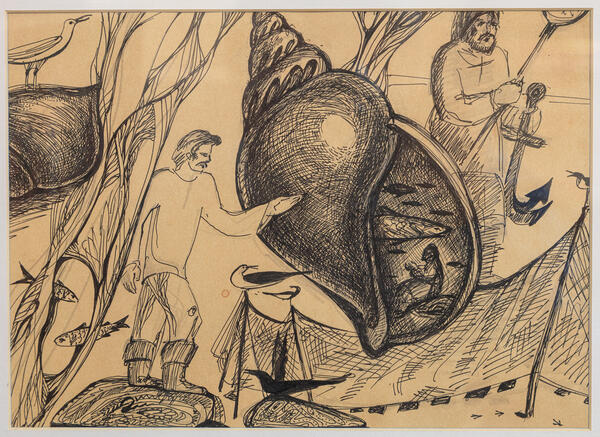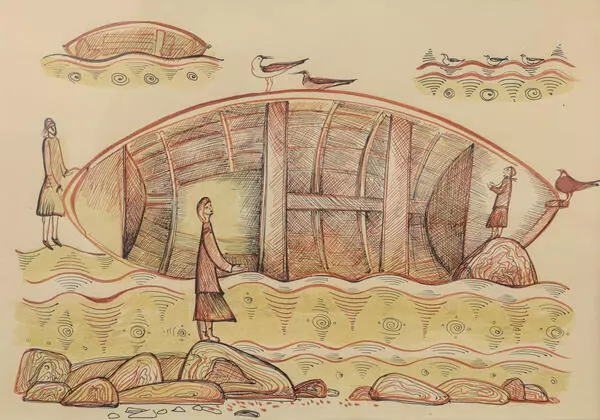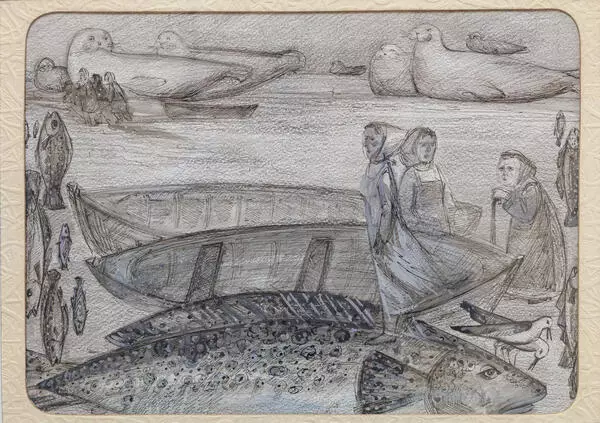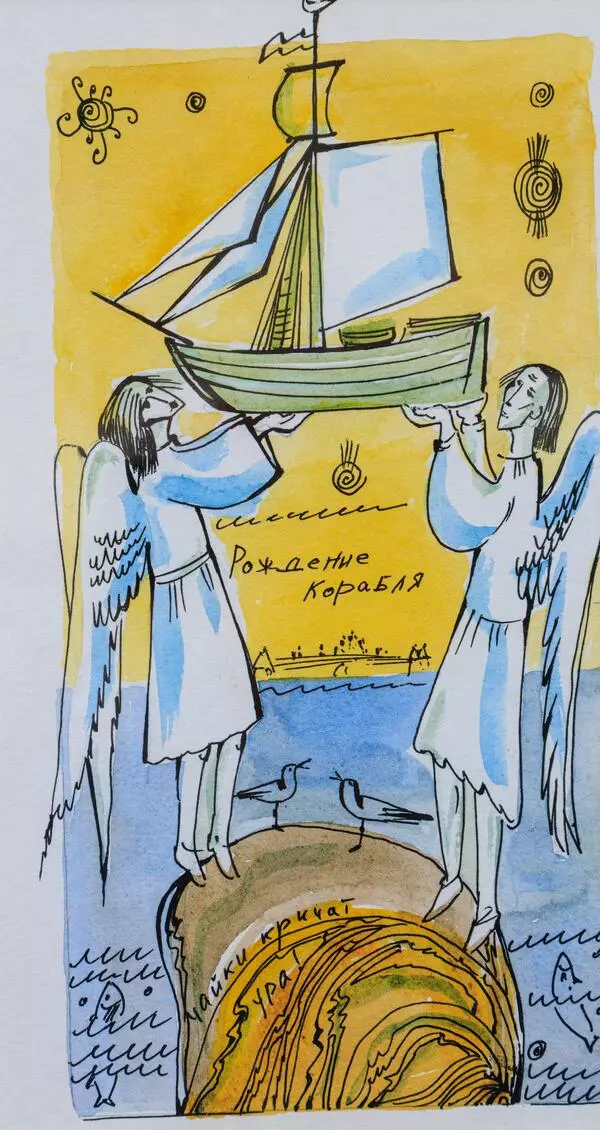Ekaterina Sedacheva’s drawing “On the White Sea” is done in ink and watercolor. It is part of a series dedicated to the life of the Pomors. Realistic details are combined with fabulous and surreal motifs.
In this drawing, Sedacheva depicted men in traditional Pomor clothes. One of them stands on the stone next to the nets set on pegs. In the background there is a man in traditional fishing clothes. He holds an anchor and a sack — a tool with which fish were pulled out of nets.
The whole Pomors' life was connected with the sea. They got pearls, caught seals, walruses, and various fish, including valuable ones, during their sea voyages. Part of it was for sale, the other was harvested for the future for their own use. Each sea voyage was considered a test that only the strongest and bravest could pass, and the weak died. About those who did not return, they said that they were “taken by the sea.” Nature was considered wise and fair, so people did not condemn or challenge such “decisions”.
Not only Pomor men, but also women often went to sea. Unlike other peoples, there were no superstitions associated with a woman on board of a ship on the White Sea coast. Pomor women could be hired as the person at the helm on fishing boatss or even manage a men’s crew. But even those women who stayed on the shore were considered faithful and reliable helpers of their husbands. While the head of the family was on a long voyage, his wife carried out all of his responsibilities. She was engaged in household and trade, managed money. Such a woman was ‘bolshuha’ (from the Russian word ‘bolshoy’ meaning ‘big’).
In this drawing, Sedacheva depicted men in traditional Pomor clothes. One of them stands on the stone next to the nets set on pegs. In the background there is a man in traditional fishing clothes. He holds an anchor and a sack — a tool with which fish were pulled out of nets.
The whole Pomors' life was connected with the sea. They got pearls, caught seals, walruses, and various fish, including valuable ones, during their sea voyages. Part of it was for sale, the other was harvested for the future for their own use. Each sea voyage was considered a test that only the strongest and bravest could pass, and the weak died. About those who did not return, they said that they were “taken by the sea.” Nature was considered wise and fair, so people did not condemn or challenge such “decisions”.
Not only Pomor men, but also women often went to sea. Unlike other peoples, there were no superstitions associated with a woman on board of a ship on the White Sea coast. Pomor women could be hired as the person at the helm on fishing boatss or even manage a men’s crew. But even those women who stayed on the shore were considered faithful and reliable helpers of their husbands. While the head of the family was on a long voyage, his wife carried out all of his responsibilities. She was engaged in household and trade, managed money. Such a woman was ‘bolshuha’ (from the Russian word ‘bolshoy’ meaning ‘big’).










